2. Exercise Ball
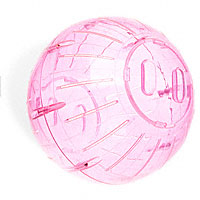
|
The exercise ball allows your hamster to run all over your room without you having to worry that it might get lost or be attacked by other animals. It is also ideal when you wash the cage, for putting the hamster in the ball makes its wait more fun and bearable.
To avoid exhaustion and dehydration, you should not put your pet in the ball for more than 20 minutes. Urine and droppings can penetrate the holes in the ball designed for air circulation, so you should supervise the area that your hamster runs on. In addition, make sure that the hamster does not roll the ball near stairways, deep holes, and other dangerous obstacles in the house.
For added value, get an exercise ball that can be used both inside and outside the cage. (comes with a stand)
3. Gnawing Toys
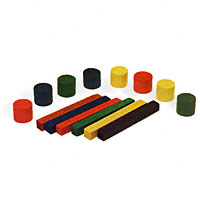
|
Gnawing toys satisfies your hamster need to gnaw and your pet will be less inclined to gnaw on other objects in the cage such as the water bottle or its toys. As a hamster's incisors are always growing, gnawing helps to keep their teeth trim and sharp. There are many kinds of gnawing toys available. Some examples are wooden chews and the fruit flavoured gnawing toys.
4. Other Toys
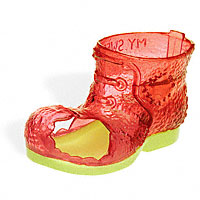
|
Hamsters like to have fun! Provide different toys specially designed for hamsters, such as tubes and play loops, to provide a variety of fun for your furry friends. Toilet rolls, small boxes and ice cream sticks are some examples of free toys you can give your hamster. Huts and hideaways satisfy your hamster's natural need to hide in the wild, and hamsters like to use them as sleeping nests. Ladders offers good climbing exercise, and tubes and tunnels lets your hamster practice their tunnelling skills!
5. Harness
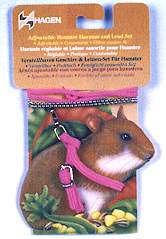
|
A small animal harness allows you to "walk" your hamster for short periods of time, but not every hamster likes to wear a harness around its body. It is more suitable for tamer hamsters, for untamed hamsters may bite you if you try to get them into the harness. Do not pull the hamster too hard when you are "walking" your hamsters so as to avoid injuries.
6. Special Insecticide
Never use household insecticide in the room you keep hamsters to kill household pests. As hamsters lick themselves during grooming, they will consume the toxic chemicals as well. Use a small animal safe repellent specially designed to kill pests but would not harm your hamster.
7. Bathing Supplies
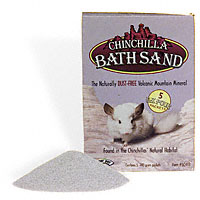
|
As hamsters spend a large amount of time grooming themselves, a human-style bath is usually not necessary. If you wish to give your hamster a wet bath, you should buy a hamster/small animal shampoo instead of sharing your own or your other pet's shampoo with your hamster. These shampoos may contain toxic ingredients that are harmful to hamsters and perfumed products may also interfere with the hamster's own natural scent gland odours. Bath your hamster as quickly as possible and dry them with a towel to avoid your pet catching a cold.
Some hamster owners also like to give hamsters a dry bath using dust powder (usually for rabbits). Sprinkle the dust powder over the hamster's body and dust them off, avoiding the eye area.
Most hamsters also like to roll in bathing salt (usually for chinchillas). Place the bathing salt into a broad container (you can use a food dish) and let your hamster roll in them. The bathing salt will eliminate oily and dust particles in your pet's fur. Watching your hamster bath in them is highly enjoyable and the bathing salt should be changed daily.



